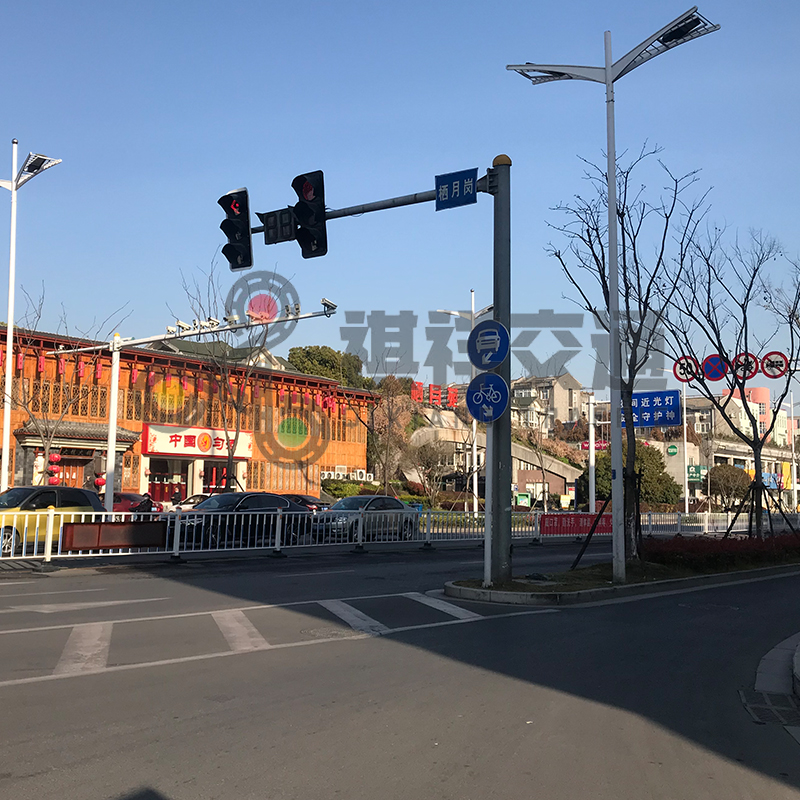Length of the traffic signal pole arm is an important factor in ensuring the safety and efficiency of traffic signals. Traffic signal pole arms are horizontal extensions that secure traffic signal heads, allowing them to be positioned in traffic lanes. These lever arms are an important part of the traffic signal system because they determine the visibility and location of signals for drivers and pedestrians. In this article, we will explore the significance of traffic signal pole arm length and the factors that influence its design.
The length of a traffic light pole arm is usually determined based on several factors, including road width, traffic speed, and the angle at which the signal needs to be placed for optimal visibility. Generally, traffic signal pole arms range in length from 3 to 12 feet, depending on the specific requirements of the signal installation location.
One of the main considerations in determining the length of a traffic signal pole arm is the width of the road. To ensure that the signal is visible to drivers in all lanes, the lever arm must be long enough to extend across the entire width of the road. For wider roads, longer arms are needed to provide adequate coverage, while narrower roads may require shorter arms.
Traffic speed is another important factor in determining the length of a traffic signal pole arm. In areas with higher speed limits, such as motorways, longer boom arms are needed to ensure drivers can see the signal from greater distances. This gives drivers more time to react to signals, improving safety and reducing the risk of accidents.
The angle at which the signal needs to be positioned also affects the length of the pole arm. In some cases, signal lights may need to be mounted at an angle to ensure optimal visibility for drivers approaching from different directions. This may require a longer lever arm to accommodate the positioning of the signal.
In addition to these factors, the height of the traffic signal pole also plays a role in determining the length of the pole arm. Taller poles may require longer arms to position the signal at the proper height and angle for improved visibility.
Traffic signal pole arms are designed to comply with industry standards and regulations to ensure the safety and effectiveness of traffic signal systems. These standards specify minimum and maximum arm lengths based on specific requirements for different types of roads and intersections.
In summary, the length of a traffic signal pole arm is a key consideration in the design and installation of a traffic signal system. Determined based on factors such as road width, traffic speed, signal positioning angle, light pole height, etc. By carefully considering these factors, traffic engineers can ensure that traffic signal pole arms are designed to provide optimal visibility and safety for drivers and pedestrians.
If you are interested in traffic signal poles, welcome to contact Qixiang to get a quote.
Post time: Apr-09-2024







